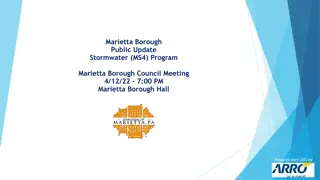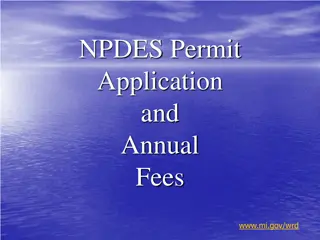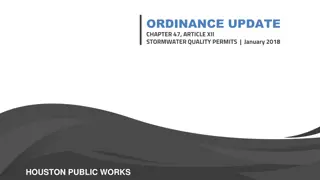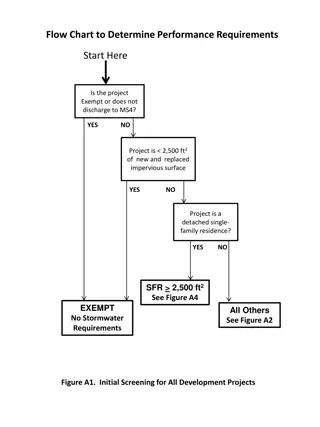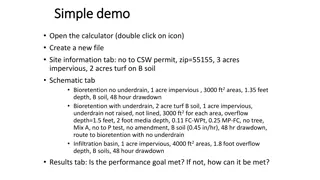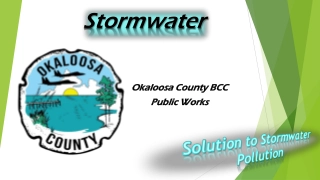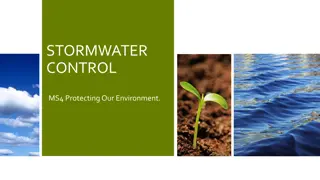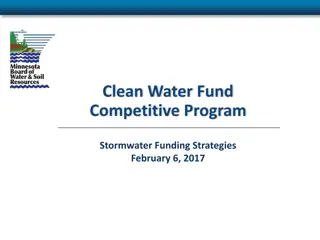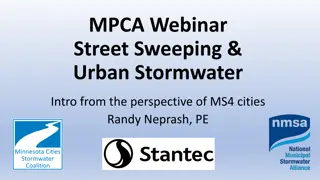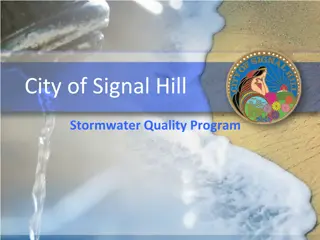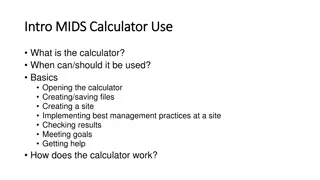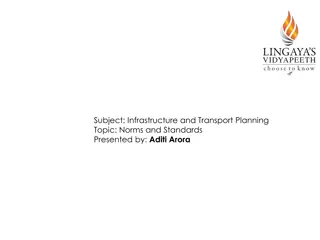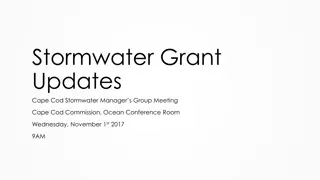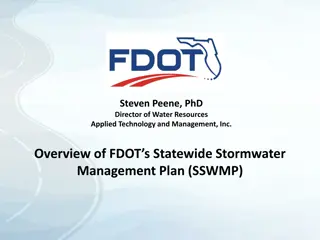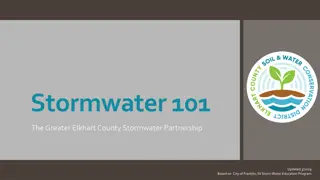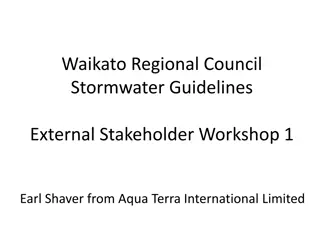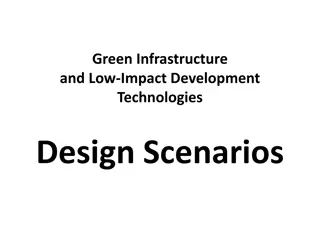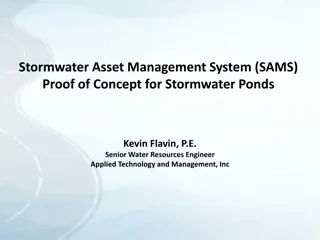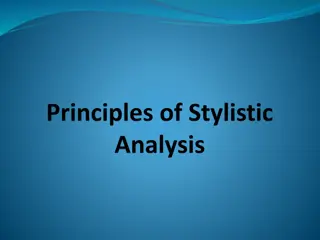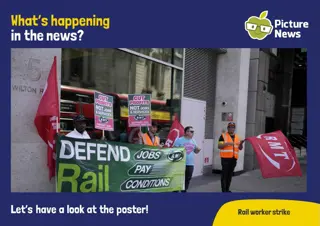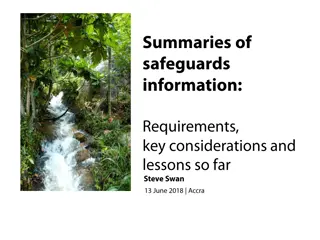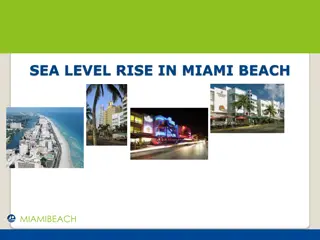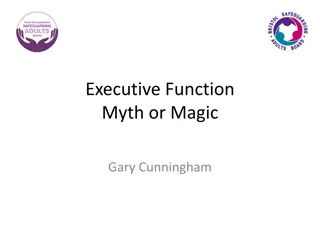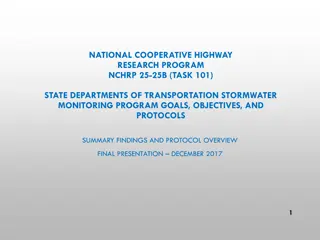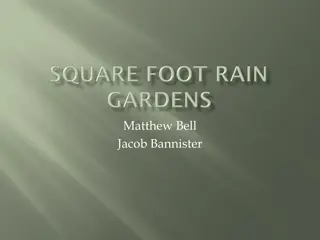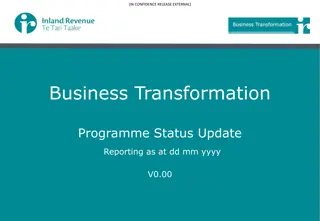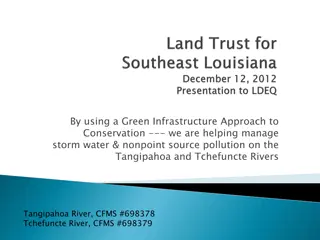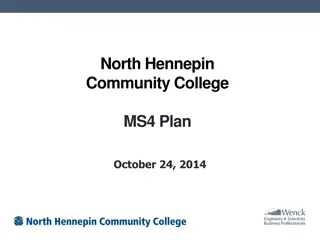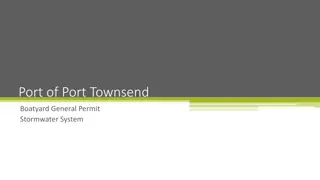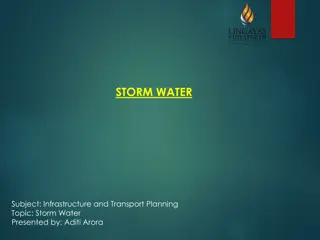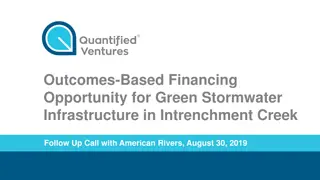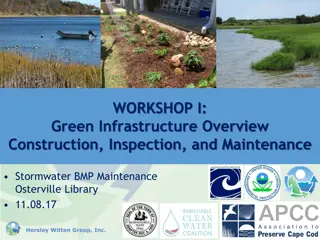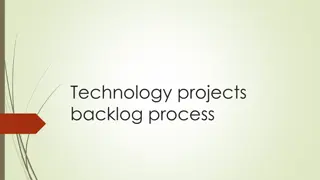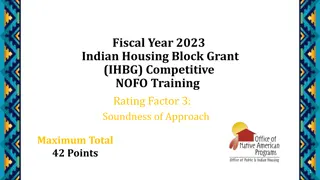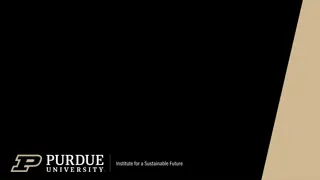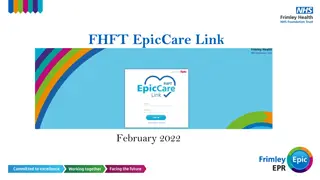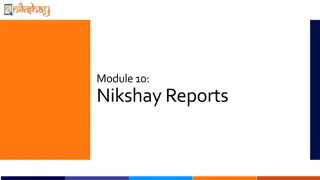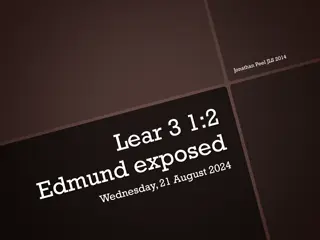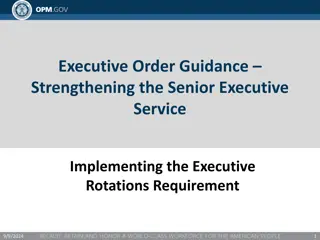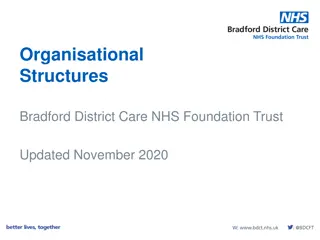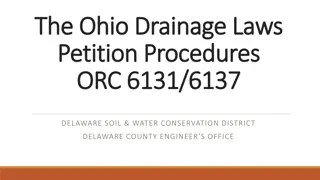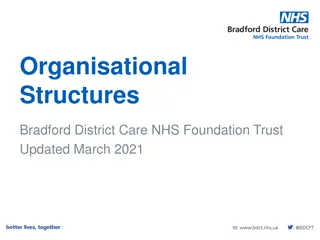Effective Two-Page Executive Summaries for Stormwater Projects
"Learn how to create a concise executive summary for stormwater projects, essential for reporting success and accountability. Includes project details, context, accomplishments, and funding breakdown."
Download Presentation

Please find below an Image/Link to download the presentation.
The content on the website is provided AS IS for your information and personal use only. It may not be sold, licensed, or shared on other websites without obtaining consent from the author. Download presentation by click this link. If you encounter any issues during the download, it is possible that the publisher has removed the file from their server.
E N D
Presentation Transcript
Guidance on the Two-Page Executive Summary for Stormwater Activity Projects
Purpose of the Two-Page Executive Summary Completion of the two-page executive summary is a required deliverable in your Scope of Work under the Task 1- Project Administration/ Management section of your agreement. -It is also called a Project Outcome Summary Report. This report is a condensed version of your project and should highlight the successes of your project. It is seen by the legislature to account for funding dollars spent.
Project General Information [Project Title] [Project Title] [Recipient] [Recipient] [Grant Number] [Grant Number] [Project open and close dates] Final Total Project Cost: $ Ecology Funded Water Quality Improvement Cost: $ Additional Water Quality Improvement Cost: $ Other Project Cost $ Final Total Project Cost- Should be the sum of Ecology Funded Water Quality Improvement Costs, Additional Water Quality Improvement Costs, and Other Project costs. Ecology Funded Water Quality Improvement Cost- Ecology grant and loan money contributed to the project. Additional Water Quality Improvement Cost- These are water quality improvement tasks that were not covered by Ecology funding, i.e. if you had a cap on your funding, match portion, unexpected costs covered that were not in the original budget. This amount may be $0 if Ecology paid for all water quality expenses. Other Project Cost- Other costs associated with the project, i.e. benches, lighting, road paving, etc. Brackets = fill in the blank (and delete the brackets!)
Project Context and Description Context and Project Description Context and Project Description Copy and paste the short description of your agreement here. [ [Insert the project short description from your agreement here] ] [ [Is this project associated with a waterbody? If yes, which?] ] [ [Provide a brief narrative to describe why your community needed this water quality project. Describe the pre-project conditions and the water quality problem. Include information related to the problems the project will fix/help fix, such as beach closures, complaints, health hazards, citizen complaints, regulatory compliance issues, newspaper articles, ugly smelly water etc.] ] Provide a couple sentences of context for your project. What is the motivation behind the project, namely, tell us about the problem? Brackets = fill in the blank (and delete the brackets!)
Project Accomplishments Project Accomplishments Project Accomplishments Activity Example In order to improve water quality, the [Name of recipient] implemented: Activities Implemented: 150 miles of roadway swept in a year resulting in x tons of solids removed from Yelm Highway. Education and Outreach: 5 stormwater management workshops hosted at the Lacey community center, with 150 total attendees. Activities Implemented: [total #, type of activity] [ [Provide a brief narrative of performance successes (i.e. project completed on schedule and within budget), partnerships, and other benefits.] ] Brackets = fill in the blank (and delete the brackets!)
Water Quality Improvements Water Quality Improvements Water Quality Improvements [ [Is there any media coverage on this project? Are there any improvements to the problem described above? Mention any available evidence.] .] [ [Is this activity a requirement of the NPDES permit? If so, what permit requirement are you meeting?] ] What water quality improvements do you anticipate? (i.e. How will behavior change improve WQ? How will equipment like sweepers/vactor trucks be used in the future to improve WQ? Anticipated miles swept/catch basins cleaned?) [ [What future outcomes do you hope to see from the project?] ] Brackets = fill in the blank (and delete the brackets!)
Next Steps & Lessons Learned Lessons LessonsLearned Learned [ [Discuss any notable or unexpected successes or challenges.] .] The Next Step for Continued Success The Next Step for Continued Success Highlight operation and maintenance tasks and who will perform them. Talk about other phases of this project if applicable. [ [Is there more work to be done to complete this project? If so, what is the estimated time frame and will the project be continued with or without Ecology funding? If applicable, what operations and maintenance tasks will be performed and who will be performing them?] ] Brackets = fill in the blank (and delete the brackets!)
Recipient Contact Information Recipient Contact Information Recipient Contact Information Provide the project web page. If none is available, delete this portion. Project Map caption Project web page found [ [here] ]
Dont Forget to Check! Tense Format Accuracy Typos, grammar, spelling Delete original questions Fill in the blanks are complete, delete brackets Quality of project pictures (see next slide for tips)
Basic Tips for Taking Good Project Photos Before and after: Choose a photo point to take before and after from same perspective, avoid using the zoom Sun: Ideally is behind you, or to the side. Not in front of you. Shadow: Make sure your focal point is in the light People: for scale, interest and jobs being performed. A useful photo is: Attractive Colorful In focus


